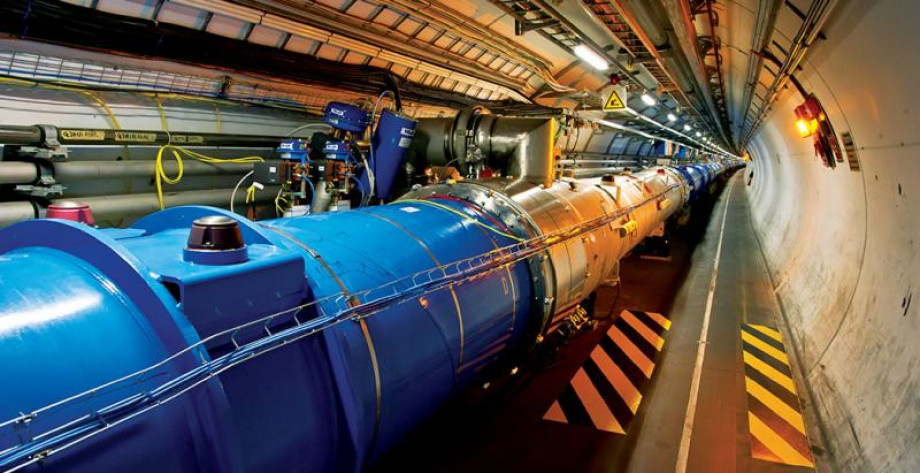ESnet Renews, Upgrades Transatlantic Network Connections

The Large Hadron Collider is the world's largest and most powerful particle accelerator (Image: CERN)
Contact: Jon Bashor, jbashor@lbl.gov, 510-501-2230
Three years after ESnet first deployed its own transatlantic networking connection, the project is now being upgraded to four 100 gigabits-per-second links. These links gives researchers at America’s national laboratories and universities ultra-fast access to scientific data from the Large Hadron Collider (LHC) and other research sites in Europe.
The original configuration that went into service in December 2014 consisted of three 100 Gbps and one 40 Gbps links. Since December 2014, the LHC traffic being carried by ESnet alone has grown nearly 1600%, from 1.7 Petabytes per month in January 2015, to nearly 30 Petabytes per month in August 2017.
The four new connections link peering points in New York City and London, Boston and Amsterdam, New York and London, and Washington, D.C. and CERN in Switzerland. The contracts are with three different telecom carriers.
“Our initial approach was to build in redundancy in terms of both infrastructure and vendors and the past three years proved the validity of that idea,” said ESnet Director Inder Monga. “So, we stuck with those design principles while upgrading the fourth link to 100G.”
Overall goals of the new agreements accomplished:
- Increase in overall capacity to meet projected demand
- Reduction in the overall cost
- Increase in the diversity of the cable systems providing ESnet circuits, and
- Maintain as much R&E network community transatlantic cable diversity as possible, including that of the Advanced North Atlantic Collaboration.
Another new component is a collaboration with Indiana University funded by the National Science Foundation with its Networks for European, American and African Research (NEAAR) award within the International Research Network Connections (IRNC) program. The goal of NEAAR is to make science data from Africa, such as that collected by the Square Kilometer Array, and Europe, like data from CERN’s Large Hadron Collider, available to a broader research community.
With the upgrade, the total transatlantic capacity for Research and Education networks is now 800 Gbps, continuing the close collaboration between the seven partners providing transatlantic connectivity under the broader umbrella of the Global Network Architecture Initiative (GNA).

